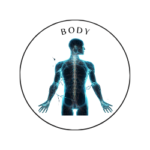 Mind
Mind
- Digital and Modern Well-being
- Mental Health and Emotional Well-being
- Mind-Body Connection and Holistic Health
- Parenting and Family
- Personal Growth and Development
- Relationships and Social Well-being
- Stress and Relaxation
- Therapeutic and Creative Practices
- Trauma and Recovery
- Work, Productivity, and Discipline
 Body
Body
 Fitness
Fitness
 Food
Food
 Beauty
Beauty
Daily Skincare Routines for Healthy Skin

Daily Skincare Routines for Healthy Skin: A Guide to Glowing, Radiant Skin
Taking care of your skin is an essential part of maintaining overall health and wellness. A consistent daily skincare routine not only helps keep your skin looking its best but also protects it from environmental damage, reduces the signs of aging, and maintains your skin’s natural barrier. In this post, we’ll walk you through the steps of an effective daily skincare routine to keep your skin healthy, hydrated, and glowing.
Why a Daily Skincare Routine Matters
Our skin is exposed to a variety of stressors every day, from pollution to UV rays, and even internal factors like diet and hydration. Developing a daily skincare routine is essential because it:
- Cleanses the skin of impurities, excess oils, and environmental toxins.
- Hydrates to maintain moisture levels and prevent dryness.
- Protects from harmful UV rays, pollution, and other environmental aggressors.
- Nourishes the skin with essential nutrients that promote repair and regeneration.
Understanding Your Skin Type
Before diving into the specifics of a daily skincare routine, it’s important to understand your skin type. This will help you choose the right products that work best for your skin’s unique needs:
- Normal Skin: Balanced, not too oily or dry, with small pores and a smooth texture.
- Oily Skin: Prone to excess oil production, often shiny with larger pores, and may be prone to breakouts.
- Dry Skin: Lacks moisture, may feel tight, and prone to flakiness or rough patches.
- Combination Skin: A mix of oily and dry areas, typically oily in the T-zone (forehead, nose, chin) and dry elsewhere.
- Sensitive Skin: Easily irritated, prone to redness, itching, or allergic reactions.
Knowing your skin type will allow you to tailor your routine and choose products that address your specific needs.
The Essential Steps in a Daily Skincare Routine
A basic skincare routine should be performed twice a day—once in the morning to prepare and protect your skin for the day ahead, and once in the evening to remove impurities and nourish the skin overnight. Let’s break down the steps:
1. Cleansing: The Foundation of Healthy Skin
Why it’s important: Cleansing your skin removes dirt, excess oils, makeup, and pollutants that can clog pores and lead to breakouts. It prepares the skin to absorb the next steps in your routine.
- How to cleanse: Use a gentle cleanser suited to your skin type. For normal to dry skin, opt for a cream-based cleanser that hydrates while cleansing. Oily or acne-prone skin benefits from a gel or foaming cleanser that helps to control excess oil.
- When to cleanse: Cleanse your face twice daily—once in the morning and again in the evening. If you have sensitive skin, you might find that a gentle, evening cleanse is sufficient.
Pro tip: Use lukewarm water to cleanse your face. Hot water can strip the skin of its natural oils, leaving it dry and irritated.
2. Toning: Restoring Balance
Why it’s important: Toners help remove any remaining traces of dirt or makeup after cleansing, restore the skin’s pH balance, and prepare the skin for better absorption of moisturizers and serums.
- How to use toner: Apply toner using a cotton pad or simply pat it into your skin with clean hands. Look for alcohol-free toners to avoid drying out your skin. Toners with soothing ingredients like witch hazel, rosewater, or chamomile can calm irritation, while toners with salicylic acid can help with acne-prone skin.
3. Serums: Targeted Treatment
Why it’s important: Serums are concentrated formulas designed to deliver specific active ingredients directly into the skin. Whether you’re targeting wrinkles, pigmentation, or hydration, serums help you address those concerns with powerful ingredients.
- How to choose: For anti-aging, look for serums with ingredients like retinol, peptides, or hyaluronic acid. For brightening, vitamin C serums can help with uneven skin tone and dullness. Hydrating serums with hyaluronic acid are great for maintaining plump, moisturized skin.
4. Moisturizing: Locking in Hydration
Why it’s important: Moisturizing keeps your skin hydrated and protects its barrier function, preventing dryness, irritation, and premature aging.
- How to choose: If you have dry skin, use a rich, cream-based moisturizer. For oily or combination skin, go for a lighter, oil-free moisturizer. Moisturizers with added antioxidants can also help combat free radicals caused by environmental stressors.
5. Sun Protection: Shielding from UV Damage
Why it’s important: Sunscreen is the most crucial step in any daytime skincare routine. UV radiation is one of the leading causes of premature aging, hyperpigmentation, and skin cancer. Protecting your skin from the sun is essential for long-term skin health.
- How to use sunscreen: Apply a broad-spectrum sunscreen with at least SPF 30 every morning, even on cloudy days or when indoors (as UV rays can penetrate windows). Reapply every two hours if you’re outside for extended periods or sweating. Look for sunscreens that are non-comedogenic and suitable for your skin type to avoid clogging pores.
Pro tip: If you’re using makeup, choose products with added SPF for extra protection.
Night-Time Skincare Routine: Repair and Rejuvenate
Your night-time skincare routine is when your skin undergoes its natural repair processes. It’s important to include treatments that focus on rejuvenation and hydration.
1. Double Cleansing (Optional):
If you wear makeup or sunscreen during the day, double cleansing is highly recommended. Start with an oil-based cleanser or cleansing balm to dissolve makeup, followed by your regular facial cleanser to ensure a thorough cleanse.
2. Night Serums and Treatments:
Night is a great time to use retinol-based serums, which promote collagen production and help reduce the appearance of fine lines and wrinkles. Retinoids can be drying, so be sure to follow up with a moisturizer.
3. Eye Cream:
Eye creams target the delicate skin around the eyes, helping to reduce puffiness, dark circles, and fine lines. Look for ingredients like caffeine, peptides, and vitamin K for brightening and de-puffing effects.
4. Moisturize and Seal in Hydration:
Your nighttime moisturizer should be slightly heavier than your daytime one to provide deeper hydration while you sleep. If your skin is extra dry, consider using a face oil as a final step to lock in moisture.
Additional Tips for Healthy Skin
- Hydration: Drink plenty of water throughout the day. Hydrated skin is plumper and more resilient to environmental stress.
- Diet: A diet rich in antioxidants, healthy fats, and vitamins can promote glowing skin. Include foods like berries, nuts, and leafy greens in your diet.
- Get Enough Sleep: Lack of sleep can lead to dull skin and exacerbate signs of aging like fine lines and dark circles. Aim for 7-9 hours of quality sleep each night.
Conclusion
A well-rounded daily skincare routine doesn’t have to be complicated. By consistently following the basic steps of cleansing, toning, moisturizing, and protecting your skin with sunscreen, you can maintain a healthy complexion. Don’t forget to adjust your routine as needed based on your skin type and concerns. With the right care and attention, you can keep your skin looking fresh, radiant, and youthful for years to come.
